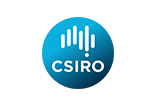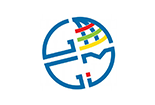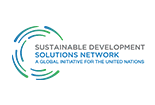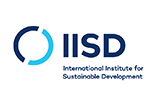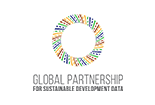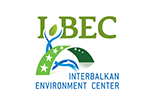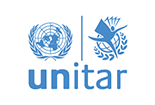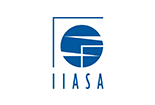SDGs Geospatial Roadmap: Bridging the Gap Between Data and Decision-Making
The Roadmap provides practical guidance for the use of geospatial information for the production, measurement, monitoring and dissemination of geospatially enabled SDG indicators.
Background
At the midpoint of the 2030 Agenda for Sustainable Development, we face significant headwinds in achieving our shared goals. Even before the advent of COVID-19 we were not on track, and today we find ourselves even further behind. To be blunt, the transformational vision and new data requirements needed to realize the 2030 Agenda have not been fully realized, and the enormity of the challenge has been underestimated. Despite these challenges, geospatial information and Earth observations continue to offer an opportunity to both make up lost ground and accelerate our progress towards achieving a sustainable future.
Driven by a strong culture of innovation, the development of novel methods and tools, and a generally broader level of geospatial skills and awareness, the opportunity for geospatial information and Earth observations to support decision-making at global, national, and local levels is stronger than ever before. But this begs the obvious question: What specific steps can countries undertake to use geospatial information and Earth observations to help inform decision-making and accelerate their progress in achieving the goals of the 2030 Agenda?
Enter the SDGs Geospatial Roadmap. Developed by the Inter-agency and Expert Group on the SDG Indicators’ Working Group on Geospatial Information (IAEG-SDGs WGGI), the SDGs Geospatial Roadmap recognizes and codifies that geospatial information can and should be accepted as official data to aid in activities related to the SDGs. Specifically, the Roadmap helps communicate the value of the support already provided to the IAEG-SDGs, UN custodian agencies, and Member States, and provides practical guidance for the use of geospatial information for the production, measurement, monitoring and dissemination of geospatially enabled SDG indicators.
What is the SDGs Geospatial Roadmap?
The SDGs Geospatial Roadmap helps enhance the awareness of geospatial information, Earth observations, and related data sources, products, tools, and methods that support SDG implementation through three phases:
1. Prepare and Plan
2. Design, Development and Testing
3. Producing, Measuring, Monitoring and Reporting Geospatially Enabled SDG Indicators
These phases are supported by key actional steps and resources that establish and/or strengthen national capacity for using geospatial information for the SDGs. A key strength of the Roadmap is the inclusive nature of how it was developed. By bringing together delegates from national statistical and geospatial agencies from all regions with varying levels of economic development, along with invited experts and representatives of the UN system, the collective experience of all stakeholders helped produce both a practical and actionable Roadmap.
Phase 1: Prepare and Plan
The key actions of Phase 1 focus on setting up the national environment (inclusive of governance, people, and technology needs) to prime national geospatial enablement.
- The composition of this Committee would be anchored by both the NSO and NGIA, augmented by other relevant agencies (such as the Land Registry, Space Agency, etc.)
Phase 2: Design, Development and Testing
Phase 2 identifies resources that help with assessing and deciding on which data, methods, gaps, issues, and actions where geospatial information might be helpful. Processes and examples are drawn from across global and national data ecosystems.
Example: FAO examines the methodology and needs for SDG 15.4.2 – the Mountain Green Cover Index (MGCI).
- MGCI measures changes in the area of green vegetation in mountain areas (forest, shrubs and pasture land, and cropland). This information will help identify the status of conservation of mountain environments in order to measure progress towards SDG Target 15.4.
Phase 3: Producing, Measuring, Monitoring and Reporting Geospatially Enabled SDG Indicators
Phase 3 identifies key actions that support the end-to-end process of producing, disseminating, and reporting indicators. By building on the foundation established in Phases 1-2, countries will be able to effectively produce, report, measure, and monitor SDG indicators.
The Journey from Inception to Adoption: Implementing the SDGs Geospatial Roadmap
The SDGs Geospatial Roadmap was conceived at the WGGI’s sixth meeting in Mexico City in March 2020. Since then, the world endured COVID-19 which has been a watershed moment for both the global statistical and geospatial communities, underscoring their mutual importance and highlighting the importance of integrated data for many countries. This established awareness and capacity can now be translated into empowered evidence-based and data-driven decision-making.
The 2030 Agenda, its Goals, Targets, and the actual Global Indicator Framework are built upon the idea that future sustainable development strategies must be inclusive with universal respect for equality and non-discrimination, transformative for people and the planet, and evidence-based and data-driven. With the Statistical Commission’s decision to adopt the SDGs Geospatial Roadmap and codify that geospatial information can and should be used in official decision-making, we can now begin to bridge the gap between the statistical and geospatial actors working within the global indicator framework of the SDGs and other forms of location-based information (such as Earth observations).
We know that geospatial information provides the basis to integrate and analyze data, inform decision-making, and help decision-makers identify the ‘where’ action is needed. The SDGs Geospatial Roadmap is the starting point to enable the IAEG-SDGs, custodian agencies and states to fully harness the potential of geospatial information in achieving the 2030 Agenda.
View All News







